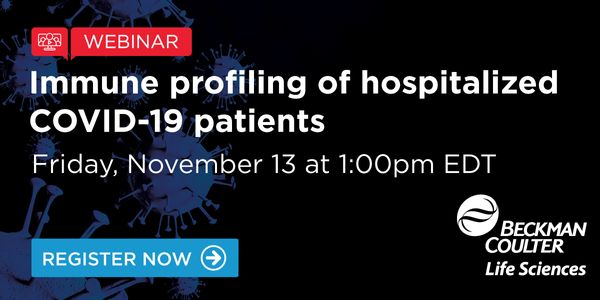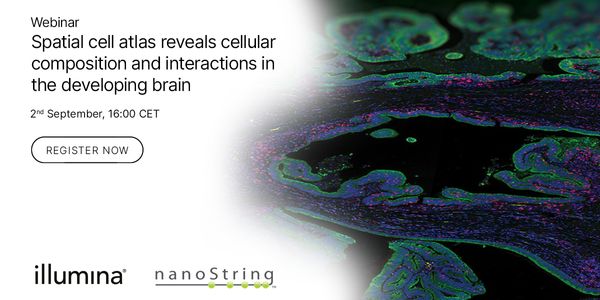Transcription
Transcription is the first step in gene expression in which genetic information is copied from a DNA to an RNA format. Transcription is controlled by proteins known as transcription factors that regulate the expression of genes.
-
Date: November 19, 2020 Time: 12:00am (PDT), 9:00am (CET), 4:00pm (SGT) We present split-FISH, a multiplexed fluorescence in situ hybridization method that leverages a split-probe design to...
NOV 16, 2020 | 8:00 AM
Date: November 16, 2020 Time: 8:00am (PST), 11:00am (EST) CRISPR screening has become the prime discovery tool in modern biomedical research and drug discovery. At the same time, most screen...
NOV 13, 2020 | 10:00 AM
Date: November 13, 2020 10:00am PST, 1:00pm EST Coronavirus disease 2019 (COVID-19) is currently a global pandemic, but human immune responses to the virus remain poorly understood....
Today's presentation will cover the following topics from the perspective of a NYC based Laboratory: What have we learned year to date about CoV-2 and specifically how diagnostic testing...
Speaker:
Vincent Streva, PhD
NOV 05, 2020 | 7:00 AM
DATE: Date needed, 2020 TIME: Time needed Exosomes are a population of naturally occurring mobile, membrane-limited, 30 – 100 nm in diameter, extracellular vesicles containing a large...
Speaker:
Jorge Escobar
, Aurélie Tacheny
OCT 28, 2020 | 7:00 AM
Date: October 28, 2020 Time: 7:00am (PDT), 10:00am (EDT) Although chemotherapy remains the mainstay of systemic therapy, a large number of cancer patients fail to respond to it. About half o...
OCT 23, 2020 | 7:00 AM
DATE: October 23, 2020 TIME: 07:00am PDT, 10:00am EDT The FDA’s 21CFR part 11 guidance on the use of electronic records for data retention or submission is clear. With manually implemen...
OCT 08, 2020 | 7:00 AM
DATE: October 8, 2020 TIME: 7:00am PDT, 10:00am EDT, 4:00pm CEST How often do you pipette in your cell culture lab every day? Usually, we do it so often that we tend stop thinking about ho...
Changes in transcriptional regulation are thought to be one of the key drivers of carcinogenesis. Although next-generation sequencer revolutionized transcriptome analysis, there are limitati...
Speaker:
Masahito Kawazu, MD
Cancer is a multifactorial disease, and its genesis and progression are extremely complex. The scope of precision oncology is rapidly expanding to address previously undruggable targets. The...
Speaker:
Dr. Ming Liu
RNA plays important and diverse roles in biology, but molecular tools to manipulate and measure RNA are limited. We demonstrate that RNA-targeting CRISPR effector Cas13 can be engineered for...
Speaker:
Omar Abudayyeh, PhD
, Jonathan Gootenberg, PhD
Presented at: CRISPR Virtual Event Series 2020
Combinatorial inhibition of effector and feedback pathways is a promising treatment strategy for KRAS mutant cancers. However, the particular pathways that should be targeted to optimize the...
Learning Objectives: 1. Using an optics- and label-free approach to CRISPR research 2. Explain current approaches to selecting the most robust gRNA for CRISPR assays 3. The opportunities tha...
A repeat expansion in the C9orf72-SMCR8 complex subunit (C9orf72) represents the most common genetic cause of two fatal neurodegenerative diseases: frontotemporal dementia (FTD) and amyotrop...
























